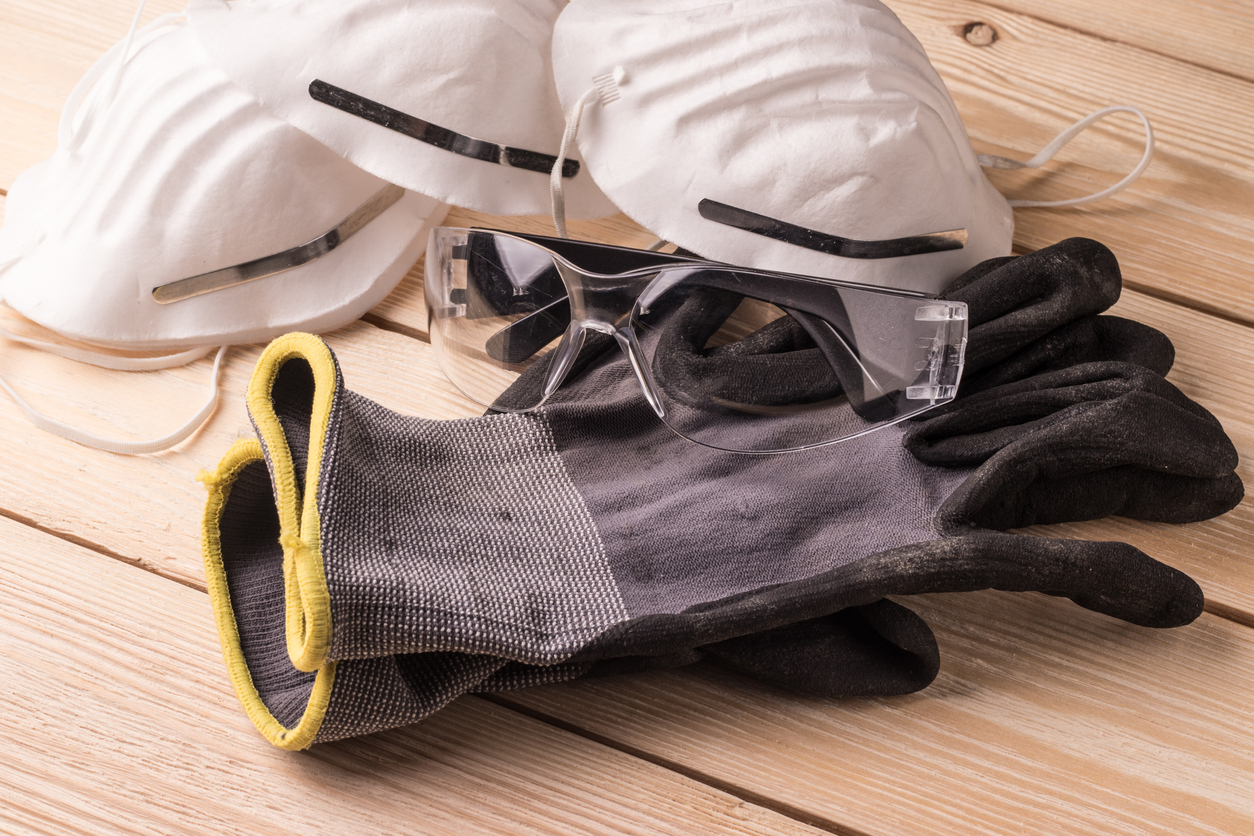Dichloromethane: when it comes to spray adhesives, it has its pros and its cons. Whilst the chemical offers strong adhesive properties, it poses a significant health risk to users if certain health and safety measures aren’t observed. In the latest blog from TensorGrip Joinery Adhesives, we share some expert tips on how our customers can use DCM-based products safely and effectively.
Here at TensorGrip, we’re passionate in our belief that strong bonds and impressive end results shouldn’t come at the expense of our user’s health. That’s why we’re innovating behind the scenes to remove dichloromethane (DCM) from as many of our products as scientifically possible.
DCM Adhesives: There’s a Safer Way to Spray
Despite our efforts to remove harmful compounds from our adhesive products, the fact remains that dichloromethane continues to form a major element of several products within the TensorGrip range. Indeed, there are several Joinery scenarios where DCM continues to be the only choice for decent results on certain substrates.
Here’s an example: you’ve purchased a brand new cabinet with a melamine film and a board made from the hard plastic, MFC. If you want to change that board or laminate over it, you’ll need an aggressive solvent (dichloromethane) that can form a key and etch into the substrate. If you use a non-chlorinated adhesive, the solution will rest on one surface and will literally pull it apart. Indeed, whilst DCM presents a risk, sometimes there’s simply no other way to get the bonding results you need.
Let’s look at another example of where a DCM product may actually be safer than a non-chlorinated alternative. If you’re doing an interior refit, you’ll want to avoid the use of flammable adhesives. In this case, and if you’re working in a live environment where electrics can’t be switched off, using a DCM-based adhesive like TensorGrip L10N will be safer.
Safety First, Spray Second
It’s true: dichloromethane presents a significant health and safety risk. However, these risks can be mitigated by ensuring that the following steps are taken:
- Undertake air monitor tests: DCM-based adhesives present their most significant risks whenever they are used in enclosed, poorly ventilated spaces. By carrying out regular air monitoring tests, you can examine the air in its ambient surroundings, allowing you to determine the level of exposure faced by you and your colleagues (we recommend using your adhesive for approximately 15 mins to get accurate results from your test). For an extra level of confidence, you can also request an air absorber which temporarily absorbs any harmful compounds you come into contact with.
- Always wear a mask: When it comes to using DCM-based adhesives in indoor spaces, there’s one you should always follow: mask first, spray second. Unlike any other element of PPE, face masks provide a vital layer of separation between your respiratory system and the polluted air around you. We recommend reaching out to a specialist organisation like Mouldex, who create both fast-fit masks and air-fed systems. If you’re using DCM products frequently, it pays to have a mask specialist in your contact book.
- Ensure high air flow: The vast majority of DCM dangers are at their worst in spaces with poor air flow. By ensuring a good level of ventilation, you can remove many of the harmful particles that present a risk to your health. To create high levels of air flow, you can take simple measures like opening windows and doors. Meanwhile, for a more permanent solution, you can install air conditioning systems, filter units and extraction booths in your workshop.
- Spray from the waist: Sometimes, you’ve just gotta shoot from the hips. When you’re working with DCM adhesives, this simple step is essential. If you spray DCM adhesives above your head or whilst on a ladder, the solution’s vapour will sink and come down on you, the user. To negate this risk, always spray from the waist, ensuring that falling vapour makes contact with the ground and not your lungs!
- Use Personal Protective Equipment (PPE): Whilst this piece of advice may seem obvious, it is a fact that thousands of joiners around the world use potentially hazardous chemicals without taking sufficient PPE precautions. By wearing long sleeve tops, protective gloves and safety goggles, you can prevent your DCM adhesive from causing damage to those most vulnerable areas (namely your eyes and your skin).
- Protect your hands: While wearing protective gloves will provide a strong defensive barrier between your hands and harmful chemicals, there are some extra steps you can take. For example, by applying a barrier cream, you can ensure your skin isn’t affected by any chemicals your gloves may have missed. Furthermore, it always helps to wash your hands after using DCM adhesives - it’s a no-brainer!
Don’t let your health be unnecessarily damaged by dichloromethane-based adhesives. Follow our advice and get the very most out of your TensorGrip product in a way that is safe!
More Tips from TensorGrip Joinery
There’s a safer way to spray, and we’re keen to share our safety knowledge with you. To find out more about using DCM-based adhesives safely, contact us to speak to a Tensor Trusted Advisor. Alternatively, check out our blog page or our YouTube channel for official tutorial videos.
